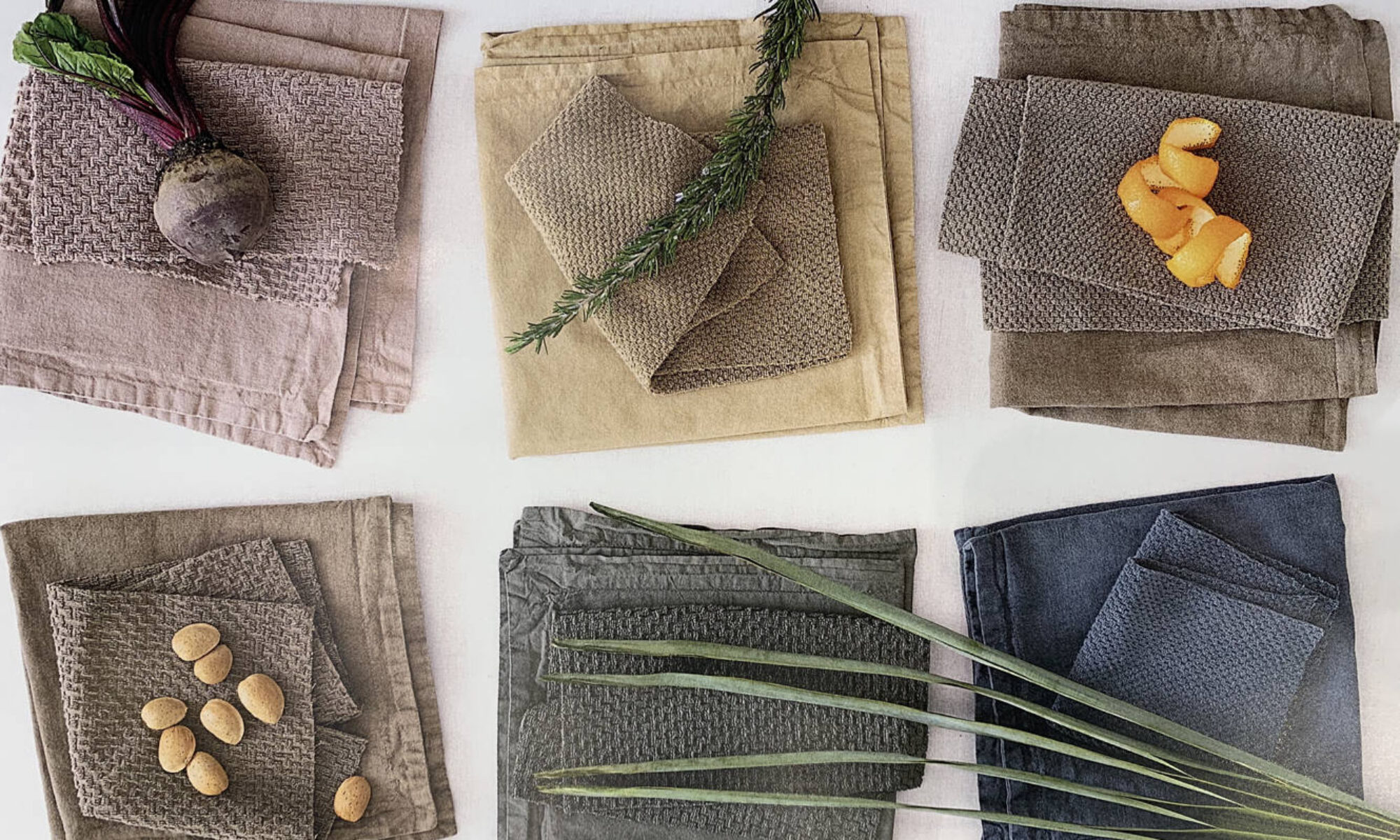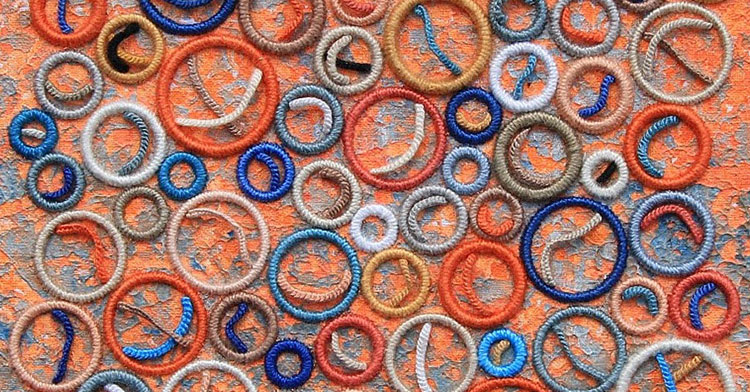The relationship between the textiles industry and circular design.
Evaluation of the sources below provides insight into the relationship between the textile industry and circular design. ‘It has been suggested that designers could play a significant role in the circular economy; it is estimated that 80–90% of a product’s lifecycle impacts are decided during the design phase (Graedel et al, 1995). Circular design aims to redefine sustainability models, urging a more cohesive and interconnected design approach where the “full lifecycle of products and processes emulate natural systems, in which there is no waste” (McDonough, 2009). However, this is perhaps far from the current reality, and in many cases, designers are failing to implement the changes required to move towards a circular textile industry.
Fletcher, K. (2014). Sustainable Fashion and Textiles. (online) Routledge. doi:https://doi.org/10.4324/9781315857930.
The author presents a critical outlook on the sustainability of the textile industry, presenting an analysis of each stage of current textile design approaches. The book is divided into two halves, the first explaining and evaluating the four key stages of designing for textiles: material extraction, production, use and disposal. The second explores potential approaches to alter the ways in which we consume. Fletcher presents a broad perspective on sustainability issues, presenting alternative opportunities for design opportunities which enable cyclical design qualities from production through to use. Through a reflection and critique of each stage of a product’s life cycle, the author concludes that there is a level of ignorance within the industry, and companies currently fail to take responsibility for their contribution to the environmental crisis, ‘because handling waste is expensive and brands will want to minimize exposure to such costs, it incentivizes the creation of products that are more durable and are easier to reuse and recycle’ (Fletcher, 2014). Ultimately the author concludes that the future of the textiles and fashion industries are ‘complex and unpredictable’, though does imply that an interconnected and cyclic design approach is the key to a more sustainable textile industry. However, as evidenced by the later publication from the Environmental Design Agency (2022), cited below, a decade on there has still been very little movement towards cyclical, sustainable design practices.
Hornbuckle, R. (2018) ‘What Else Do We Know? Exploring Alternative Applications of Design Knowledge and Skills in the Development of Circular Textiles’, Journal of Textile Design Research and Practice, 6 (1), pp. 23–41. DOI: 10.1080/20511787.2018.1434745.
The journal draws on existing research to explore ways of applying existing design knowledge to introduce a circular economy, specifically within the textile industry. The author acknowledges that in recent years textile designers have begun to expand the conventional view of design’s role and appreciate that there is a need for change and consideration surrounding our environment. Thus far there has been some attempt to address the challenges of material circularity, however, this is ‘far from the reality of mainstream design practice’ (Hornbuckle 2010). Though there are various ways that textile designers can apply their knowledge and skills to implement circular design, Hornbuckle concludes that the environmental crisis is too complex for the industry to face independently. The author advocates for interdisciplinary, collaborative projects being the key to change. Though acknowledges that more work needs to be done to refine these methods of collaboration, ‘including a much clearer understanding of how designers from different disciplinary backgrounds and cultures can work together’ (Hornbuckle, 2010).
Goldsworthy, K. Earley, R and Politowicz, K. (2018) ‘Circular Speeds: A Review of Fast & Slow Sustainable Design Approaches for Fashion & Textile Applications’, Journal of Textile Design Research and Practice, 6 (1), pp. 42-65. DOI: 10.1080/20511787.2018.1467197
In ‘Circular Speeds’ the authors offer a definition of a circular design model in the context of a a range of design speeds, specifically slow to fast fashion. The article reviews both historical and contemporary industry approaches, alongside academic design research, to suggest the ways in which the notion of ‘speed’ can offer new opportunities for a more sustainable industry. Through an offering of reflection and guidance, the authors offer a diverse range of approaches to coming together to devise a vision for an industry that is sustainable and circular. Similarly, to the article by Hornbuckle cited above, it is proposed that ‘by working in communities of practice, designers can identify both the physical and psychological barriers to more sustainable solutions, translating them into creative proposals for transformation.’ (Hornbuckle, 2018). Again, this suggests that multi-disciplinary integration is crucial in moving towards an industry of circular design.
Norris, L. (2019) ‘Waste, dirt and desire: Fashioning narratives of material regeneration’, L. Pickering, S. Armstrong, & P. Wiseman (eds.), The Sociological Review, 67 (4), pp. 886–907. doi:10.1177/0038026119854273.
The article explores three contexts where manufacturers and retailers have experimented with adding value to fashion and textiles with the aim of reshaping their narratives of material sustainability. The author criticises the current state of an industry ‘which currently recycles less than 1% of its own cast-offs back into clothing’ (Norris, 2019), presents the reader with the concept that keeping fibres in circulation for longer may not only be environmentally sustainable but also economically advantageous. Norris advocates for a drive towards a more circular textiles system in Europe, presenting frameworks developed from sustainability and resource effectiveness. The article summarises by suggesting some evidence where different attempts are being made for creating value around material, particularly amongst new brands, yet suggests we are still in an ‘era of transition’ and only now is the textiles industry beginning to take sustainability through design circularity seriously. Much like the earlier dated writings cited above, the author concludes through an emphasis on the need for change. This perhaps indicates that though there has been recognition that revision of current design practises is essential, the concept of circular design remains largely overlooked and disregarded by the textile industry.
European Environment Agency, (2022) Textiles and the environment : the role of design in Europe’s circular economy. Publications Office of the European Union. https://data.europa.eu/doi/10.2800/578806
‘Textiles have on average the fourth highest negative life cycle impact on the environment and climate change’ (European Environment Agency, 2022). The publication explores this statement through research and statistics, relaying the information to the reader with the purpose of creating an urgency for change. The authors analyse the major challenges faced by Europe to make changes to the textiles industry both in terms of production and waste, presenting four pathways for change: longevity and durability, optimised resource use, collection and reuse, and recycling. From the perspective of the author, a shift away from mass consumption to a circular textile production and consumption system is essential. ‘Circular design is an important component of circular business models for textiles. It can ensure higher quality, longer lifetimes, better use of materials, and better options for reuse and recycling.’ (European Environment Agency, 2022). This publication gives way to an interesting comparison between the earlier dated texts cited above. Written over the span of a decade, all of the texts demonstrate a sense of awareness that circular design is a key enabler of the transition towards sustainable textile production. Nonetheless, as statistically proven within this publication, to date, there has been a severe lack of action and failure to change.
To conclude, it is clear that ‘textile designers have the potential to play a key role in the…shift to a circular and sharing economy. The need to create materials that are recycled and can be recycled again means that we require textile designers to take centre stage in this new era.’ (Goldsworthy, Earley and Politowicz, 2018). However, thus far there has been fairly little attempt to move the industry towards the circular design economy that is so clearly essential for a healthy and sustainable environmental future.
References:
Graedel, T. E., Comrie, P. R., Sekutowski, J. C. (1995) ‘Green product design.’ AT&T Technical Journal, (74) (6), pp. 17-24.
McDonough, W. (2009) Cradle to cradle:remaking the way we make things. London : Vintage.






What a great annotated bibliography: wide-ranging, appropriate sources, that are summarised very nicely and tied together at the close. This and the other posts so far show that you are completely on track with the blog task and are doing brilliantly. Thanks so much for your efforts and care and for sharing your thinking.